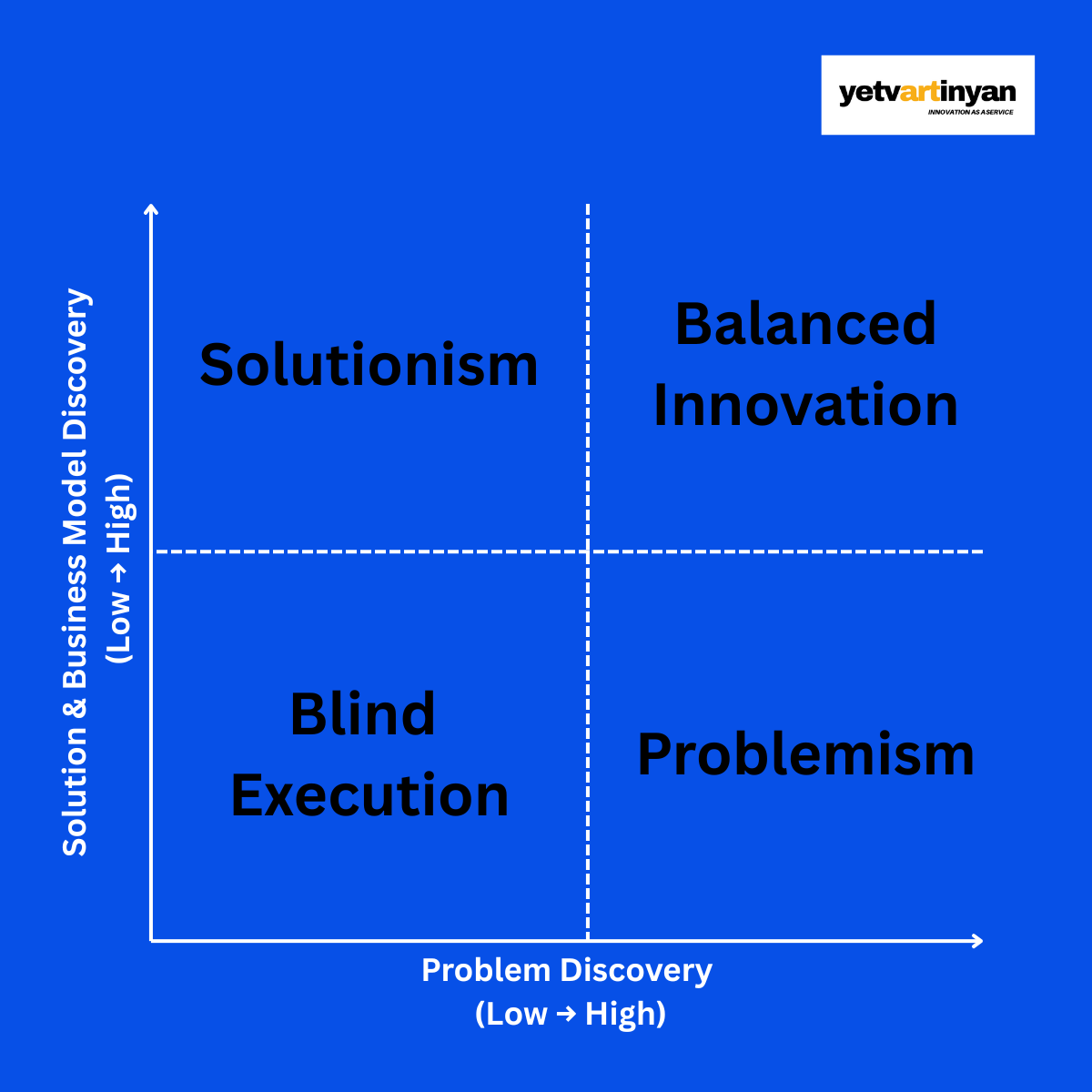Problemism vs. Solutionism: When Insight Without Execution—or Execution Without Insight—Kills Innovation

First, top management or boards ignite projects, often fuelled by insights from foresight teams. Then user researchers and UX experts enter, followed by engineers and technologists. Later, commercial functions like finance, business development, marketing, and sales get involved.
Each group brings a valid perspective, but if these views are layered sequentially rather than aligned from the start, users and their main jobs drift. Priorities clash, definitions of outcomes shift, and the initiative gets pulled in different directions.
The real challenge isn’t generating ideas—it’s aligning these voices into one coherent path and keeping that agreement intact throughout the entire process.
Problemism: When Great Insights Don’t Translate into Impact
Imagine a team spending months on interviews, journey mapping, and empathy exercises. Their insights are rich, actionable, and illuminating. Yet, when it comes to designing solutions or testing a business model, the work stalls.
This is problemism:
Strength: deep understanding of user problems.
Weakness: fuzzy or missing solution ideation and business model validation.
Contrast this with solutionism:
Strength: fast execution, building, scaling.
Weakness: insufficient understanding of whether the problem being solved is real or valuable.
Bias and Alignment: The Hidden Risk
Even the most rigorous problem research can be undermined as more people join a project. Every team member brings a mental model of the “user” and the “problem,” shaped by their role, incentives, and lived experience:
Engineers imagine power users pushing features to the limits.
Marketers focus on mainstream adoption and simplicity.
Sales leads target enterprise clients with purchasing power.
Leadership envisions the segments that look best to investors.
As these perspectives collide, a single problem statement fractures into multiple competing definitions. Teams risk parallel solutions competing for resources, slowing execution, and producing products that satisfy no one.
Jobs to Be Done (JTBD) offers a solution:
Treat every opinion as a hypothesis until validated.
Capture all perspectives side by side—don’t smooth differences.
Test each proposed problem with real users: interviews, observation, or data.
Prioritize based on urgency, frequency, and underservedness, not internal bias.
Anchoring strategy in evidence transforms alignment from bureaucracy into a force multiplier. Diversity of opinion doesn’t vanish; it becomes raw material for sharper focus, guiding the team to a single, validated problem definition.
Balanced innovation is the sweet spot: deep problem understanding + validated solutions + viable business model.
Why Boards and C-Levels Should Care
Problemism isn’t just a conceptual issue—it’s a financial and strategic risk:
Investment risk: Insights stay on paper, never reaching the market.
Opportunity cost: Months of research without tangible outcomes.
Team frustration: Top performers lose momentum when insights fail to translate.
C-levels and boards need to map where teams excel and where gaps exist. Understanding this early saves millions in wasted effort.
Bridging the Gap: From Problem to Business Impact
Keep reading with a 7-day free trial
Subscribe to INNOVATION& by Yetvart Artinyan to keep reading this post and get 7 days of free access to the full post archives.



